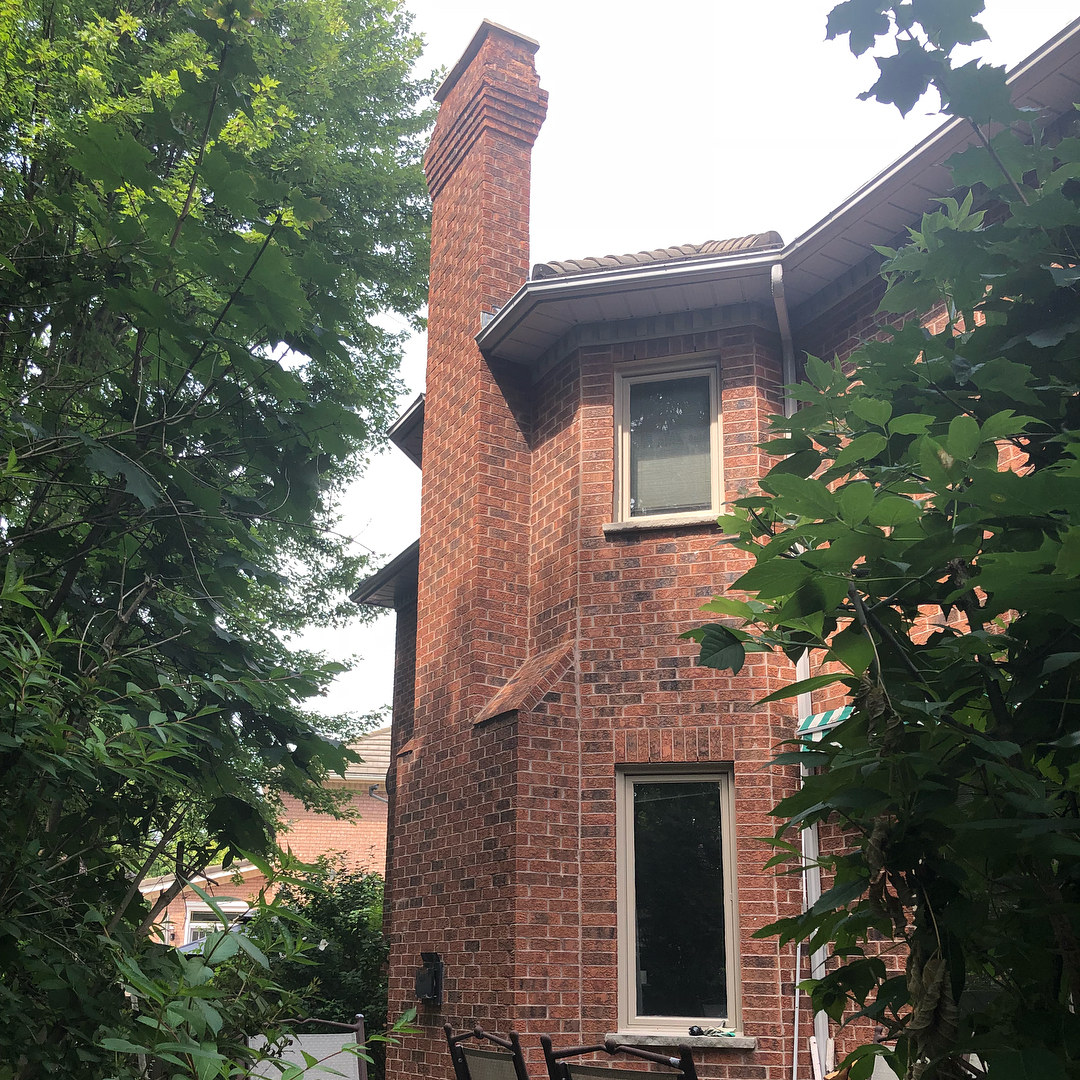How and When to Clean Your Chimney?
Throughout the year, clients inquire about the cleaning of their chimneys.
Specifically they ask when and how this should be accomplished.
There are companies which specialize in providing this service, which is fundamentally different from those masons who engage in the construction and repair of chimneys and fireplaces.
Some people can actually do it themselves armed with knowledge on the subject, and having the right tools for the job. As a caution; people who are not comfortable working at heights and who do not possess the correct fall arrest equipment, and knowledge of how to use such equipment, should immediately disqualify themselves from attempting this type of work.
It is also key to understand that when hiring someone to clean your chimney, it is imperative to choose a company or individual that possesses proper liability insurance, can demonstrate that they have fall arrest training and certification, and that they are an accredited business. With any trade service, requesting references is a standard course of completing due diligence, and protecting oneself from liability in the event there is a fall or accident.
The importance of cleaning a chimney on a regular basis may be obvious to some; but chimneys can easily be forgotten in the grand scheme of people’s busy schedules. The number one reason to keep a chimney clean is to reduce the possibility of a chimney fire igniting which can spread into the home or impact neighbouring homes as a result of airborne sparks and embers.
Look at the proximity of tree branches which may overhang the roof and chimney. Close branches and leaves need to be removed because even a clean chimney can throw sparks and possibly ignite crisp fall leaves as an example. Branches and leaf cover may also serve to impede the draw of a chimney, particularly under low pressure weather circumstances.
One charged with cleaning the chimney should carefully examine the exterior masonry condition of the chimney and report such to the property owner. If masonry repairs are required, it is good to know and have it addressed before freezing weather arrives.
Other items requiring inspection can include flexible metal gas liners, metal chimney caps and screening, and flu tiles which project through the individual flues of the chimney. If for example, the cement cap atop the chimney is cracked, or clay flu tiles are cracking, they should be repaired to avoid accelerated chimney deterioration beneath.
Inspection for animals such as raccoons, squirrels or birds ; which are critters that commonly gravitate due to heat, or nest to have their babies. A nest located inside a flu can result is smoke backing up into the house.
While the chimney cleaner is up on the roof, he should also examine and report on the surrounding roof areas adjacent to the chimney itself. After all, metal flashing around the base of a chimney can become dislodged, caulking can dry out, or shingles may exhibit wear.
The process of actually cleaning the chimney typically involves sealing the firebox / fire place portion within the home, to trap dust and soot from becoming airborne within the home. The chimney cleaner typically uses a series of rods with brushes designed to scrub the side walls of the interior of the chimney.
Falling soot and debris can sit on “ledges” if the chimney flue has a bend in its construction. As a result debris may have to be vacuumed out from these junctions. Sometimes there is an exterior cleanout door on such chimneys to permit easier access.
As the work progresses downward inside the chimney flues, settling debris may end up in the firebox and on the interior hearth of the chimney. The chimney cleaner will remove that debris and may have to clean the last portion of the chimney from within the home. Proper protection of interior areas is key at this stage.
Part of a proper cleaning job involves inspecting with a mirror, up into the chimney , and down from the top of the flues to check for blockages from nests, or dislodged bricks ( If a chimney is an older structure). On such older homes, internal mortar deterioration or brick work where the glazing has worn off, can be vulnerable to allowing smoke to escape within the floors of the home.
Hardware associated with the fireplace should be checked for proper function and lubricated as required. Soot from glass door surfaces should be cleaned using an approved spray cleaner or vinegar as a more green solution.
Finally the chimney should be checked for proper draw, by lighting a small fire, and observing both the exterior chimney and interior area to insure that smoke is not curling back into the home. Improper draw, or trouble keeping a fire lit, can signal that modifications may be required to make the chimney function properly. A common requirement is having to raise the height of the chimney, to draw better or to be compliant with current building code and or fire code regulations.
Fuel burning fireplaces and associated metal chimneys should be inspected annually by a licensed gas fitter.
To learn more about chimneys, and fireplaces, both indoor and outdoor; visit: www.avenueroadmasonry.com or see us on Facebook™.

